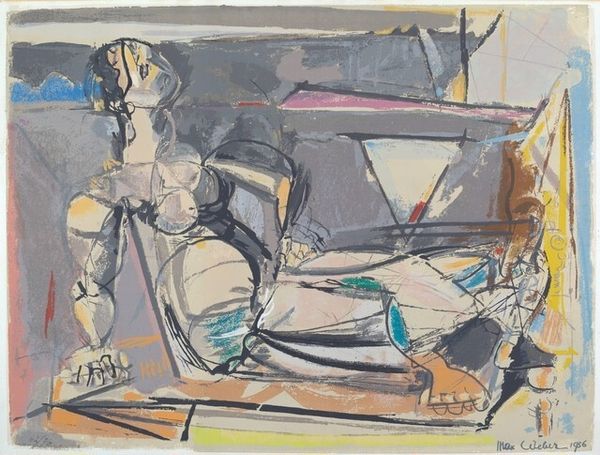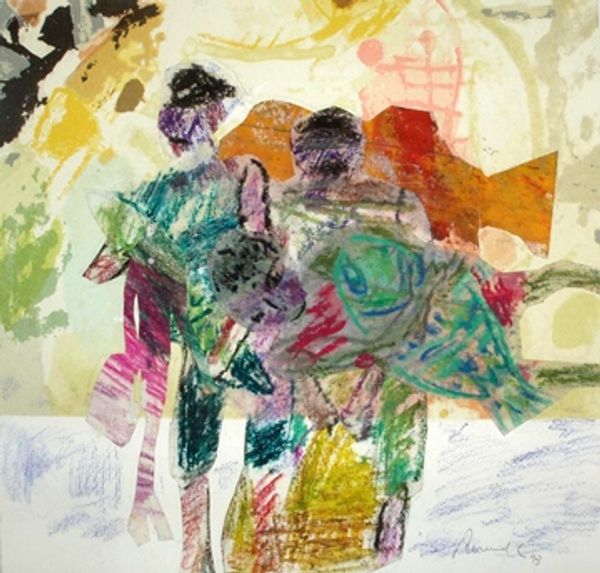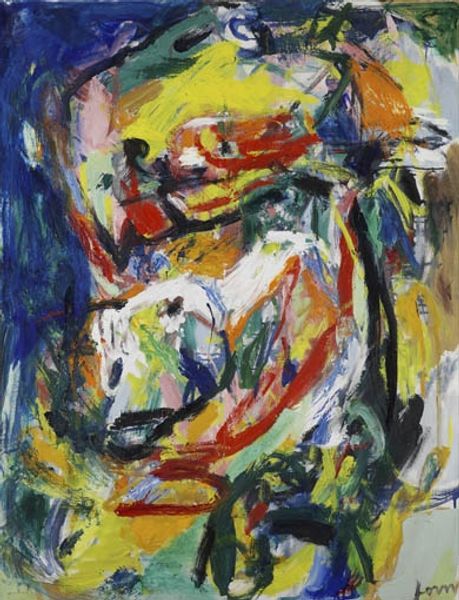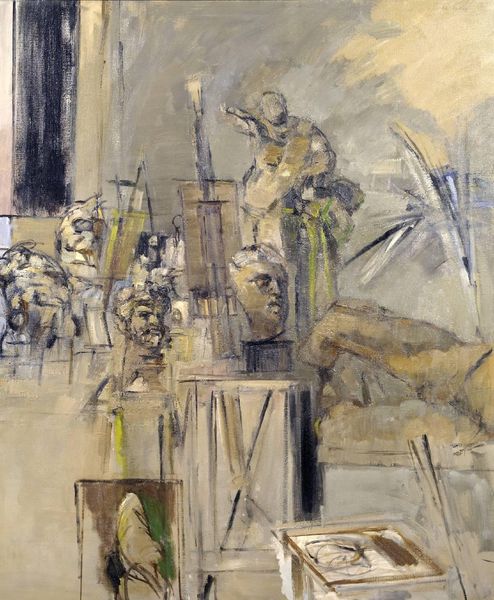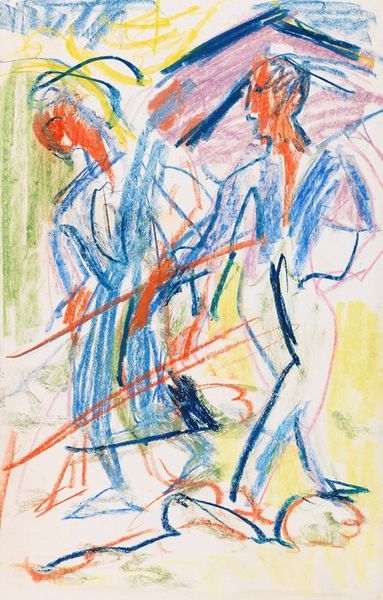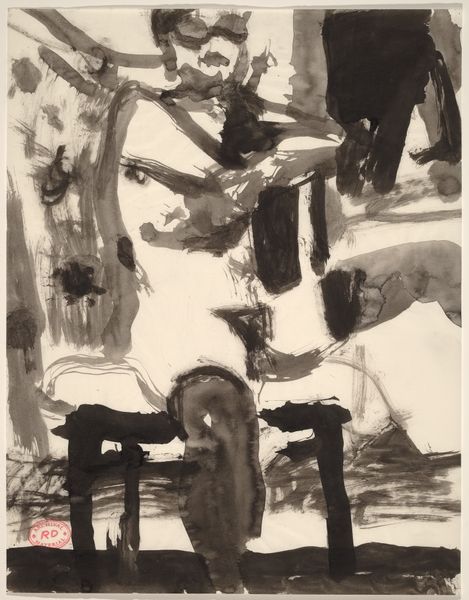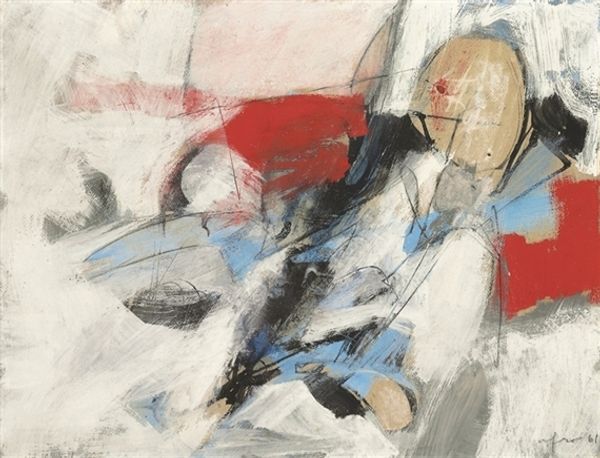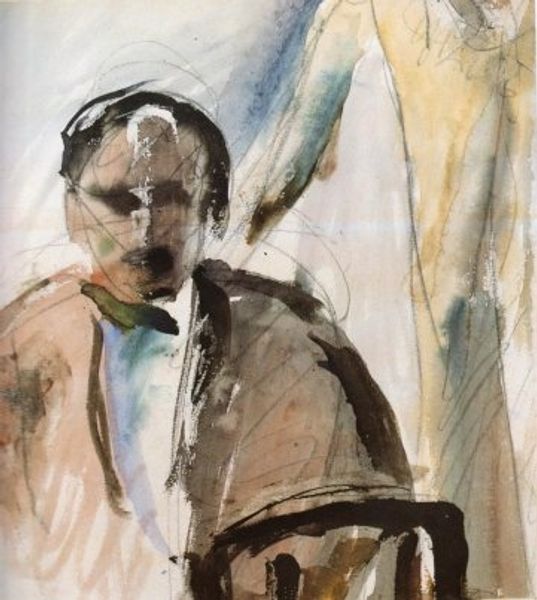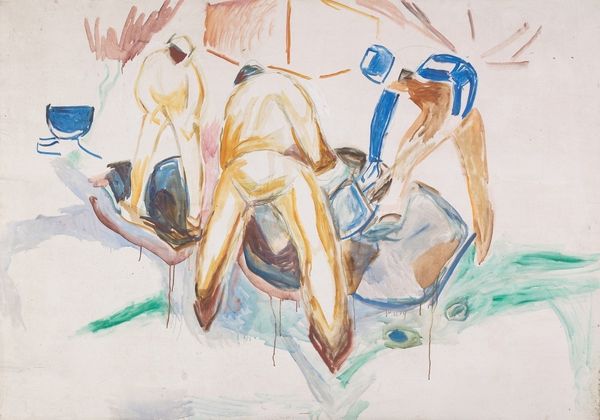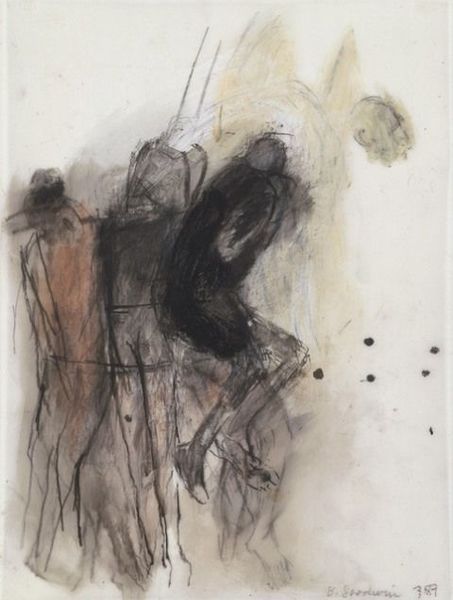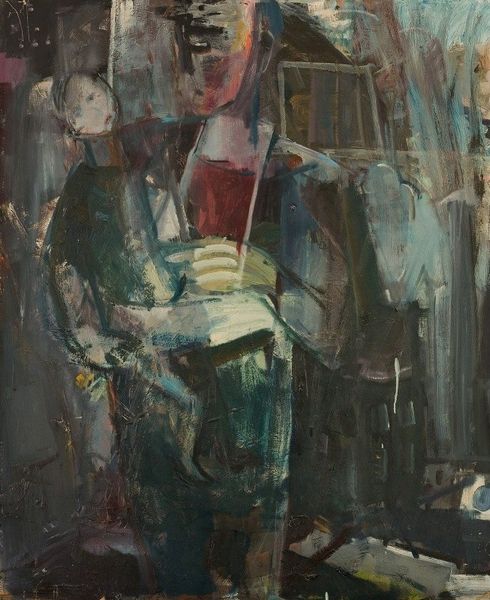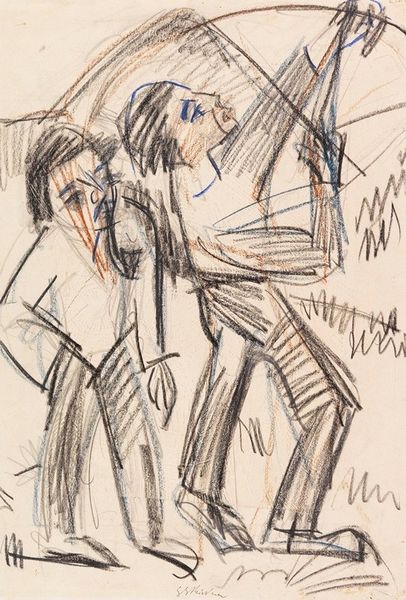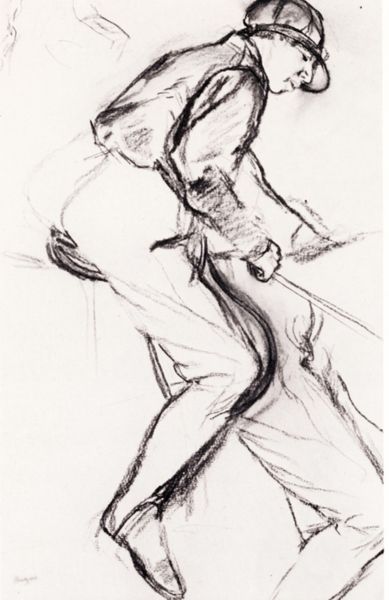
painting, watercolor
#
figurative
#
painting
#
landscape
#
german-expressionism
#
figuration
#
watercolor
#
expressionism
#
modernism
Copyright: Public Domain: Artvee
Curator: So, here we have Ernst Ludwig Kirchner's "Gleisarbeiter," painted in 1926, which translates to "Railway Workers." What’s your initial take on this watercolor? Editor: Raw energy, I’d say. There’s a kind of frenetic tension in the scene. The colours are washed, almost anxious, but that only seems to amplify the implied labour. The men, their tools, the very ground feels… precarious. Curator: Exactly! Kirchner captures this modern unease so well, doesn’t he? He used this kind of angular, almost aggressive style in many of his works. The stark, almost clashing colours aren't exactly soothing. I almost feel a certain… dizziness. Do you see that, too? Editor: I see a specific historical moment being represented. The 1920s were a time of immense industrial growth, but also tremendous social stratification. You get a real sense of the working class bearing the brunt of this "progress," their bodies bent to the will of industry. I wonder if the men feel that unease as much as Kirchner seems to. Curator: It’s Kirchner, though. The personal always bleeds through! You know, when I look at the repeated motion he evokes, that coordinated action, I can almost feel the rhythm, hear the thud of their tools. Like a macabre dance. Editor: A dance, maybe. But a forced one. Note the near anonymity of the workers; their faces are mere suggestions, lost beneath the shadow of their hats. It feels deliberate, symbolic. Are they individuals, or simply cogs in a machine? How is the march of industry reflected in their daily, grueling activities? Curator: Do you think that’s unique to Kirchner's vision here, or something specific to the period that might transcend one artist’s personal style? Editor: Good question! Kirchner's Expressionism definitely amplifies that sense of alienation, right? It's less a document than a visceral reaction. But you see the theme of worker exploitation echoing through much of the art and literature of the Weimar Republic, so… probably a little of both? Curator: A sobering reflection. It really brings you down to earth, literally. Editor: Hopefully, it brings you closer to it. Thanks.
Comments
No comments
Be the first to comment and join the conversation on the ultimate creative platform.
